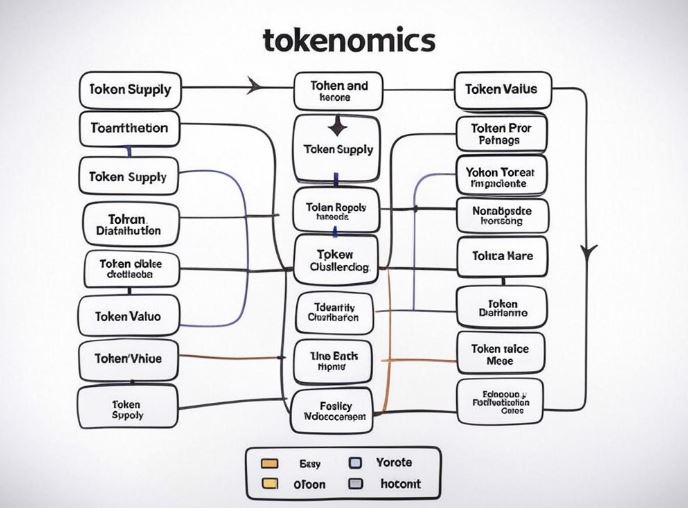
Mastering Tokenomics: A Comprehensive Guide for Web3 Developers and Entrepreneurs
Introduction
The Web3 ecosystem is rapidly evolving, and with it comes a host of opportunities and challenges. One of the most critical yet often misunderstood aspects of Web3 is tokenomics; the economic model that underpins blockchain-based projects. Whether you’re a developer building the next decentralized application (dApp) or an entrepreneur launching a new token, understanding tokenomics is essential for long-term success.
This in-depth guide will walk you through the fundamentals of tokenomics, explore common pain points, and provide actionable strategies to design and implement a sustainable token economy. By the end, you’ll have the tools and knowledge to create a tokenomics model that aligns with your project’s goals and resonates with your community.
What is Tokenomics?
Tokenomics refers to the economic principles and mechanisms that govern the creation, distribution, and management of tokens within a blockchain ecosystem. It encompasses everything from token supply and distribution to utility, incentives, and governance.
A well-designed tokenomics model ensures that a project’s token has intrinsic value, encourages user participation, and maintains long-term sustainability. Poor tokenomics, on the other hand, can lead to issues like token inflation, lack of adoption, or even project failure.
Key Components of Tokenomics
- Token Supply
- Fixed vs. Inflationary Supply: Decide whether your token will have a fixed supply (like Bitcoin) or an inflationary model (like Ethereum). Each approach has its pros and cons, depending on your project’s goals.
- Circulating Supply: Ensure transparency about how many tokens are in circulation and how new tokens are minted or burned.
- Token Distribution
- Fair Launches vs. Pre-Mining: A fair launch distributes tokens equally, while pre-mining allocates tokens to early investors or developers. Both methods have implications for decentralization and community trust.
- Vesting Schedules: Implement vesting periods to prevent large token holders from dumping their tokens and destabilizing the market.
- Token Utility
- Governance: Will your token grant holders voting rights in decentralized governance?
- Access: Can the token be used to access specific features or services within your ecosystem?
- Staking and Rewards: Design staking mechanisms to incentivize long-term holding and participation.
- Incentive Mechanisms
- Liquidity Mining: Reward users for providing liquidity to decentralized exchanges (DEXs).
- Play-to-Earn: Integrate tokens into gaming or other interactive platforms to drive engagement.
- Economic Sustainability
- Revenue Streams: Identify how your project will generate revenue to sustain the token economy.
- Token Burns: Implement mechanisms to reduce token supply over time, increasing scarcity and value.
Common Pain Points in Tokenomics Design
- Overpromising and Underdelivering
Many projects fail because they promise unrealistic returns or utility without a clear plan to deliver. Avoid this by setting achievable goals and communicating transparently with your community. - Lack of Long-Term Incentives
Short-term rewards can attract users initially, but without long-term incentives, they may leave once rewards dry up. Balance short-term gains with sustainable, long-term value creation. - Centralization Risks
Over-reliance on a small group of token holders or developers can lead to centralization and loss of trust. Design your tokenomics to promote decentralization and community ownership. - Regulatory Challenges
Tokenomics must comply with evolving regulations. Work with legal experts to ensure your token model adheres to local and international laws.
Case Study: Successful Tokenomics in Action
Let’s look at Uniswap (UNI), a leading decentralized exchange. Uniswap’s tokenomics model is a prime example of how to align incentives with long-term growth:
- Token Utility: UNI tokens grant governance rights, allowing holders to vote on protocol upgrades and changes.
- Distribution: UNI was distributed to early users, liquidity providers, and the development team, ensuring broad community ownership.
- Incentives: Liquidity providers earn fees and UNI rewards, encouraging participation and ecosystem growth.
By focusing on community-driven governance and sustainable incentives, Uniswap has built a thriving ecosystem that continues to grow.
Best Practices for Designing Tokenomics
- Start with a Clear Vision
Define your project’s goals and how your token will help achieve them. - Engage Your Community
Involve your community in the design process to build trust and ensure alignment with their needs. - Iterate and Improve
Tokenomics is not a one-time task. Continuously monitor and adjust your model based on feedback and market conditions. - Leverage Analytics
Use data to track token distribution, user behavior, and market trends. This will help you make informed decisions and optimize your tokenomics over time.
Conclusion
Tokenomics is the backbone of any successful Web3 project. By understanding its core principles and addressing common pain points, you can create a token economy that drives adoption, fosters community engagement, and ensures long-term sustainability.
At Web3Dev, we’re committed to helping you navigate the complexities of the Web3 ecosystem. Whether you’re a developer, entrepreneur, or enthusiast, our resources and guides are here to empower you on your journey.
Ready to dive deeper? Explore our other tutorials on decentralized finance (DeFi), blockchain development, and more. Together, let’s build the future of Web3!
Call to Action
- Visit to Web3Dev for the latest guides and insights.
- Join our Telegram community to connect with like-minded developers and entrepreneurs.
- Share this guide with your network and help others master tokenomics!
By creating evergreen, in-depth content like this, Web3Dev aims to become your go-to resource for all things Web3. Let’s grow the ecosystem together!



No Comments